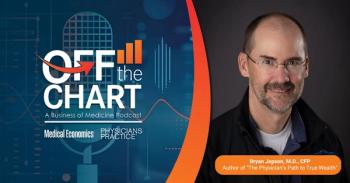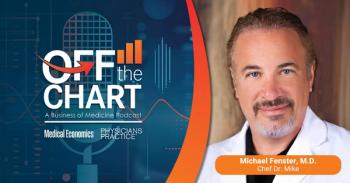
One Thing Leads to Another in Internal Medicine
Unlike specialties that require completion of fellowship, the specialty of the internist hospitalist doesn't require constant repetition of mechanical procedures and the learning of technological devices. Rather, the internist specializes in the pathophysiology of the sick human being in all its manifestations, many of which can occur simultaneously
Inpatient pathophysiology deserves its own fellowship. It is extraordinarily complex. As any hospitalist knows, just after you've diagnosed pneumonia, you're dealing with heart failure in the same patient after mild intravenous hydration (and perhaps due to inflammatory burden on myocardial performance). As the heart fails and pulmonary and venous engorgement ensues, the skin of the lower extremities indurates and becomes infected: now you’re dealing with a soft tissue infection necessitating gram-positive coverage. As renal function declines as a consequence of toxins, medicines, and diuresis, your jaw drops when you notice an alarmingly high urine protein/creatinine ratio during the renal failure workup.
Episodes of incontinence lead to the placement of a Foley catheter, which welcomes infiltration by multi-drug resistant gram-negative infection; this requires the use of multiple antibiotics for broad spectrum, including fungal, coverage. As serum albumin and platelet count drop in the setting of acute inflammation, the patient experiences worsening anasarca and renal failure and complications such as venous thrombosis, integumentary breakdown, impaired immunity, manifest adrenal insufficiency, impaired mentation (also known as acute delirium), and a severe up-regulation of the renin-angiotensin, sympathetic nervous, and adrenal hormone systems, all of which impair myocardial performance due to circulating catecholamines, high levels of inflammatory cytokines, and retention of toxic metabolites. The patient then is noted to have dysrhythmias on telemetry, diastolic or systolic dysfunction on echocardiography, and serum evidence of myocardial cell death (elevated troponins).
On an evening weekend when highly paid consultants are away playing golf, this patient suddenly becomes lethargic, retains carbon dioxide, and is intubated for acute hypercapnea. A transfer to intensive care maximizes treatment of septic and cardiogenic shock via the use of vasopressors; at this point the likelihood of this person surviving a cardiac arrest (for which they are high risk) dwindles to less than 6 percent.
The severe morbidity of this patient is evident to all at this point. But to me it was evident from the first 10 seconds of the intake. Why? Simply because the presence of cardiometabolic risk factors, especially obesity and hypertension, spell doom. These two aspects of any patient presentation imply severe morbidity/mortality, whether in this hospitalization or the next. Implicit in the fat belly are atherosclerosis and inflammation. Chronic hypertension implies diastolic dysfunction and fibrotic changes to the myocardium. Both lead to the inevitable fact that patients endowed with such gifts are ill-equipped to respond to challenges to their survival that occur in the hospital. Elder age and frailty complicate all of this, depending on underlying chronic inflammation at baseline.
Unlike specialties that require completion of fellowship, the specialty of the internist hospitalist doesn't require constant repetition of mechanical procedures and the learning of technological devices. Rather, the internist specializes in the pathophysiology of the sick human being in all its manifestations, many of which can occur simultaneously. Such manifestations are abundant, but finite. Each internist, equipped with a firm grasp of the physiology and pathophysiology of the human experience, must be constantly aware of the intersecting functions and interdependence of all organ systems, and must be able to see the whole through it all. In a way I understand why there is no fellowship for inpatient internal medicine: mastery of it cannot be taught. It must be gradually understood in each patient interaction every hour of the day for a lifetime (or whenever burnout sets in).
For more on Dushyant Viswanathan and our other bloggers, click
Newsletter
Optimize your practice with the Physicians Practice newsletter, offering management pearls, leadership tips, and business strategies tailored for practice administrators and physicians of any specialty.











